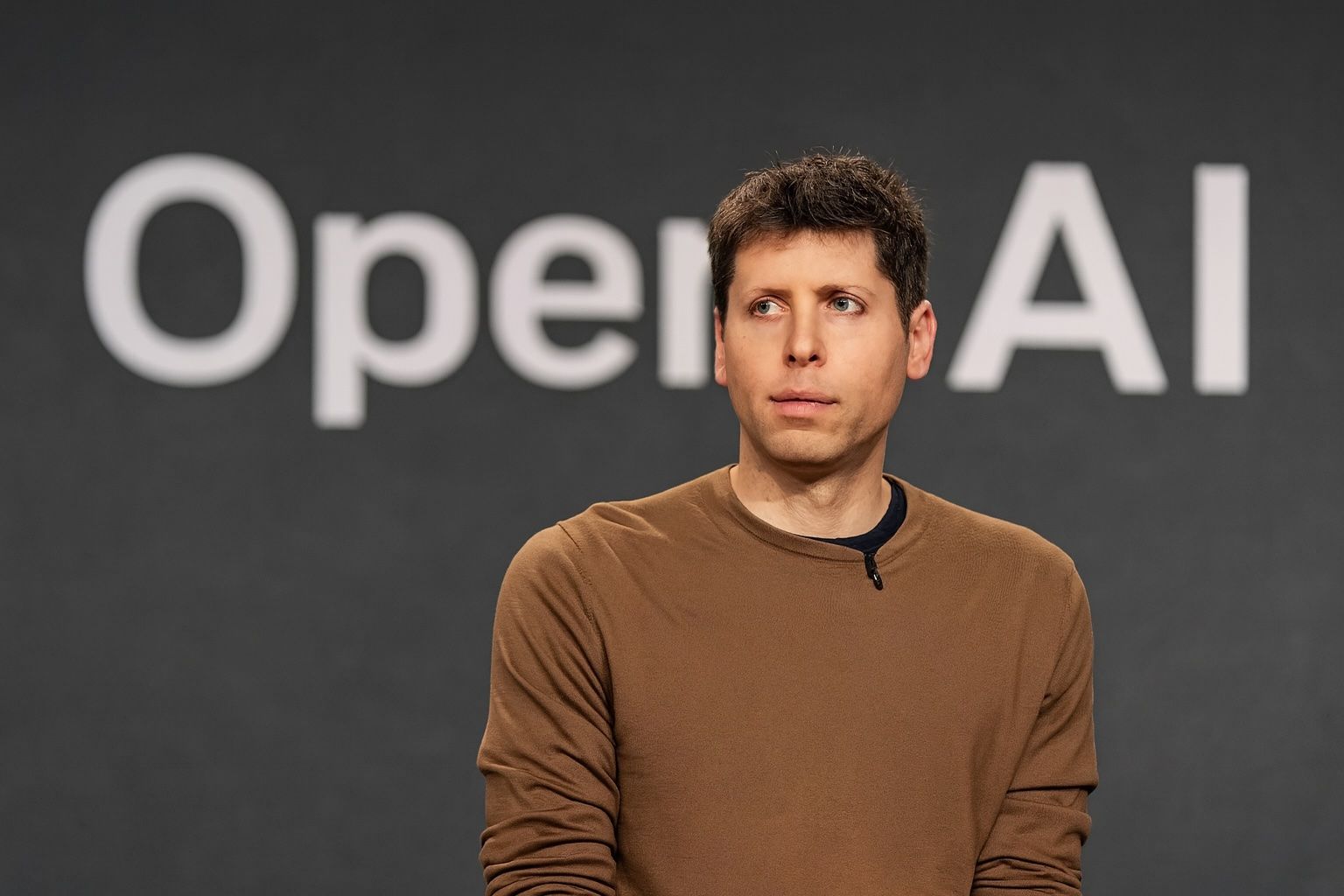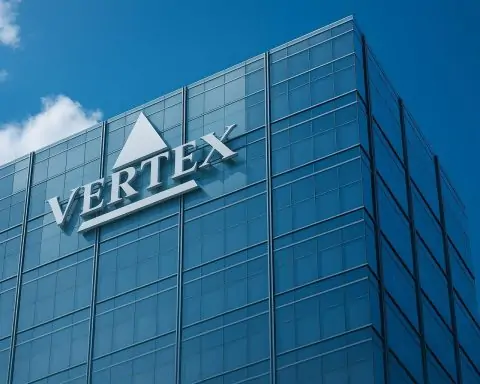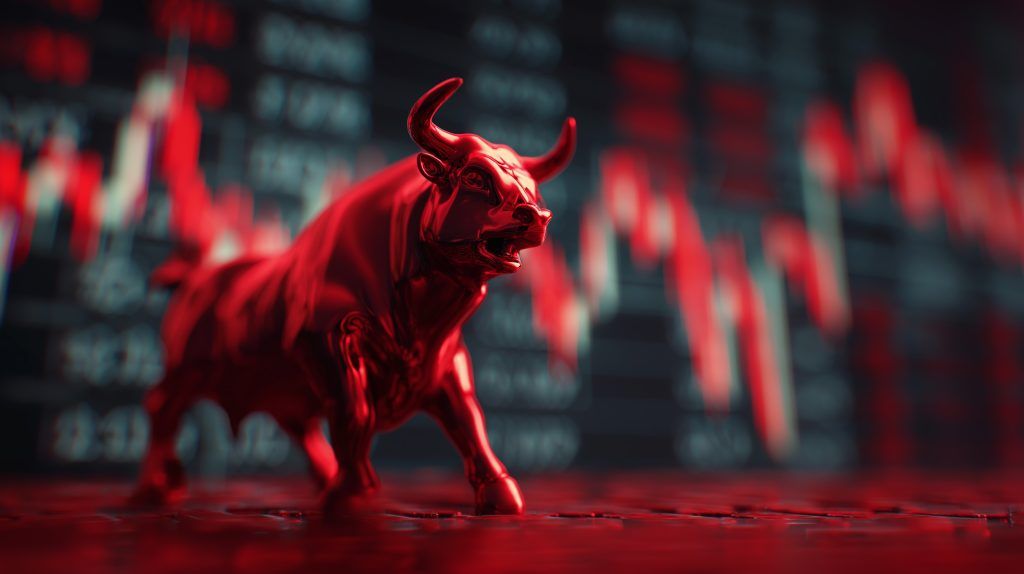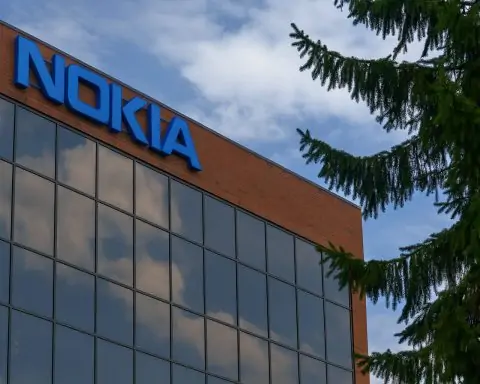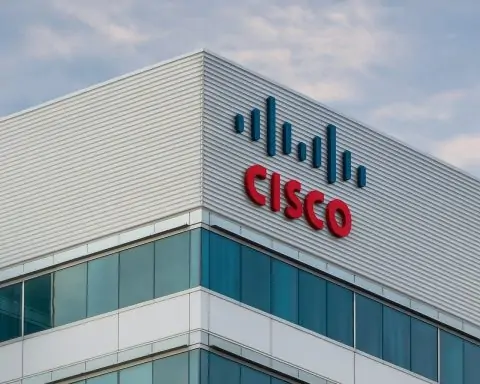- AI Giant’s Mega-Deals: OpenAI has inked blockbuster partnerships with chipmakers AMD and Nvidia, pushing its total deal value this year to roughly $1 trillion [1]. These include 6 gigawatts of AMD GPUs(roughly the output of six nuclear reactors) to power OpenAI’s next-gen AI cloud [2] [3]. In return, OpenAI secured an option to buy ~10% of AMD at virtually no cost – aligning OpenAI’s success with AMD’s future stock surge [4].
- Breakneck Product Releases: In just weeks, CEO Sam Altman launched Sora, an AI video app that attracted 1 million users in 5 days, and rolled out Instant Checkout shopping inside ChatGPT [5]. OpenAI also hinted at an enterprise software push with new AI workplace tools [6]. This torrent of announcements – from consumer apps to business features – signals OpenAI’s bid to make AI ubiquitous across industries.
- Skyrocketing Growth: OpenAI expects to surpass $13 billion in revenue in 2025, with usage of ChatGPT doubling over the last four months to ~800 million weekly users [7]. August’s launch of GPT-5supercharged interest – OpenAI calls the new model “clearly generally intelligent,” like a “PhD-level” expert [8]. Analysts liken today’s AI boom to the birth of the internet or smartphones, calling it possibly “the biggest [platform shift] we’ve ever seen in tech” [9].
- Market Frenzy and Fallout: News of OpenAI’s big bets sent AMD’s stock up ~30% (its largest jump in 9 years) to around $210, adding $80 billion in value [10]. Rival Nvidia’s shares dipped ~2% on fears its AI chip dominance could wane [11]. The ripple effect lifted other AI suppliers – from server makers to memory chip firms – to multi-year highs as investors raced to capitalize on surging AI demand [12]. OpenAI’s private valuation has exploded to an estimated $500 billion [13], yet the startup burned $2.5 billion cash in H1 2025and lost $7.8 billion, underscoring its voracious capital needs [14].
- Bold Vision vs. Safety Fears: Tech CEOs praise Altman as “one of the most ambitious founders,” moving at a pace “never seen before” to seize a once-in-decades opportunity [15] [16]. “You have to run fast to capture the opportunity… AI is a phenomenon with a super-exponential trajectory,” says Rubrik CEO Bipul Sinha [17]. Yet others warn OpenAI is “moving fast and breaking things” in pursuit of revenue, with lawsuits alleging harms from ChatGPT [18]. “They’re not doing enough for safety,” says one AI startup founder, arguing Altman’s breakneck push risks making him either the hero or villain of this transformative technology [19] [20].
- All-In Bets on the Future: Altman acknowledges the AI frenzy may be a bubble, comparing it to the dot-com mania where “smart people get overexcited about a kernel of truth” [21]. But he’s still placing “company-scale” bets that now is the time to spend big on AI infrastructure [22]. OpenAI is effectively attempting to become the “Windows” of the AI era – a dominant platform controlling the tech stack top to bottom [23]. Whether these audacious bets pay off, or falter under economic and regulatory challenges, is the multi-billion-dollar question that will shape tech’s trajectory for years to come [24].
OpenAI’s Breakneck Ambition and $1 Trillion Power Play
In 2025, OpenAI has moved from leading the AI research pack to redefining the tech industry’s power structure. The company’s recent deals are unprecedented in scale – Altman’s startup has lined up nearly $1 trillion worth of silicon, cloud, and partnerships to fuel its vision [25]. This includes massive orders of cutting-edge chips and data center capacity aimed at one goal: making OpenAI’s AI the underlying platform “for everyone” [26].
Observers note that OpenAI’s strategy resembles Microsoft’s Windows playbook in the PC era [27]. Just as Windows once sat atop an ecosystem of hardware makers and software developers, OpenAI wants its AI to be the indispensable layer in tomorrow’s tech stack – extracting value up and down the stack, even from today’s giants like Nvidia [28]. Ben Thompson of Stratechery argues that if OpenAI succeeds in “building AI for everyone,” it could soak up the lion’s share of all AI investment pouring into the field, turning those “newly promised $1 trillion of infrastructure deals” into reality [29].
Under Altman’s leadership, OpenAI certainly isn’t thinking small. In early October, the company unveiled a landmark pact with AMD to deploy a staggering 6 gigawatts of AMD GPUs in OpenAI’s servers over coming years [30]. For perspective, that’s roughly the computing power of 5–6 million PCs or the electricity used by 5 million U.S. homes [31]. AMD will start by delivering its next-gen Instinct MI450 chips in 2026, and OpenAI is committed to adopting successive generations beyond that [32] [33]. In return, AMD granted OpenAI a warrant to buy up to 160 million AMD shares at $0.01 each (about 9–10% of the company) if OpenAI meets key milestones – like actually using all 6 GW of AMD hardware and if AMD’s stock hits lofty targets (up to $600/share) [34] [35]. This “win-win” structure means OpenAI literally profits if AMD’s AI business soars, aligning their incentives [36] [37].
The AMD alliance is just one piece. Only weeks earlier, Nvidia – the current king of AI chips – agreed to invest $100 billion in OpenAI and supply at least 10 GW of its GPUs (including forthcoming “Vera Rubin” models) to OpenAI’s data centers [38]. OpenAI is also co-designing custom AI chips with Broadcom, reserving $300 billion of cloud capacity from Oracle over ~5 years, and even partnering with Samsung and SK Hynix to secure advanced memory chips and build data centers in South Korea [39]. Altman has dubbed this infrastructure build-out project “Stargate”, reportedly a $500 billion effort to construct massive AI supercomputers [40]. The clear intent is to lock in all the critical resources – chips, cloud, talent, money – needed to dominate AI and not be bottlenecked by any single supplier or shortage [41] [42].
All of this amounts to a company-making gamble. “Altman sees once-in-a-lifetime opportunities” both in consumer AI and enterprise AI, Stratechery notes, and he’s responding by spending aggressively now “to ensure [OpenAI has] infrastructure ready for tomorrow’s demand” [43]. In Altman’s view, the window to establish leadership in AI may only be open for a short time. He’s determined to grab as much territory as possible, as fast as possible – from consumer apps like ChatGPT and the new Sora video platform, to enterprise AI services – even if it means inking deals on a mind-boggling scale today.
Silicon Valley Reacts: Bold Vision or Reckless Speed?
OpenAI’s whirlwind of announcements and deals has left the tech world equal parts astonished and uneasy. On one hand, many industry leaders see Altman’s aggressive drive as exactly what’s needed in an AI revolution. “Altman is one of the most ambitious founders out there,” says Aaron Levie, CEO of Box, who compares the current AI boom to the early days of the internet or mobile computing. “He understands that these platform shifts come around once every decade or two… This is probably going to be the biggest one we’ve ever seen in tech” [44]. In other words, go big or go home.
Even among hard-charging startup CEOs, Altman’s pace is jaw-dropping. “I can’t imagine moving at the speed that they’re moving,” admits Joel Milne, CEO of AutoUnify, adding that it’s “never been seen before” [45]. The consensus among admirers is that Altman’s all-gas-no-brakes approach is what it takes to capture the AI opportunity. Bipul Sinha, CEO of Rubrik, argues that going “full throttle” makes sense when a technology is advancing at an “extraordinary clip.” “You have to run fast to capture the opportunity… AI is a phenomenon. It has a super exponential trajectory,” Sinha says, implying that slowing down would mean getting left behind [46].
Altman’s strategy of bundling big announcements in rapid succession is also deliberate. By timing several major news drops close together, he generated outsized buzz and momentum. “Each individually might not make a big splash, but collectively they do,” notes Ross Finman, CEO of Augmodo, calling it a network effect across industries [47]. From huge cloud-chip deals to flashy consumer apps, the message is that OpenAI is everywhere. And importantly, Altman’s deal-making prowess has won nods of respect: locking in long-term compute power from multiple suppliers shows “Negotiation 101” smarts, says Art Zeile of DHI Group – “to have many suppliers so you can get the best price” [48]. In short, he’s not just a visionary, but a shrewd operator securing the fuel (GPUs, data centers) needed to keep the engine running.
However, not everyone is cheering. Some tech veterans worry that Altman’s “move fast and break things” ethos (a motto that famously backfired on Facebook) could have dire consequences given AI’s power. “OpenAI is moving fast and breaking things in an effort to chase a ton of revenue,” cautions Kate Doerksen, founder of kids’ AI app Sage Haven. “They’re not doing enough for safety” [49]. Her concern isn’t abstract: lawsuits have already been filedagainst OpenAI, including a family who tragically allege ChatGPT “actively helped” their teenage son research suicide methods before he took his life [50]. Pushing out new AI products at breakneck speed, without fully vetting risks, opens the door to real harm – from misinformation and bias to mental health impacts – critics warn.
Altman finds himself in a high-wire balancing act. “I can’t really imagine what it’s like to be in his shoes,” says Jill Popelka, CEO of Darktrace. If he eases off the gas for safety, “slowing down could enable his rivals to catch up,” she notes – yet racing ahead “could result in mistakes or oversights” that undermine trust [51]. In Popelka’s words, Altman is poised to be “the hero or the villain” of this AI era [52]. Few CEOs have ever had to innovate under such scrutiny: praised as a visionary rewriting the future, even as some call for the brakes before something goes horribly wrong.
Interestingly, Altman himself seems aware that winning hearts and minds is part of the job. In a somewhat whimsical move, he encouraged users of OpenAI’s Sora app to create AI-generated videos featuring Sam Altman as the star – doing anything they can dream up. Within days, people were sharing goofy clips of Altman shoplifting or rapping in AI parody videos [53]. It’s a savvy bit of personal branding, suggests entrepreneur Joshua March: “Most successful companies today have a strong CEO persona,” and Altman making himself an accessible, even meme-able figure could make him more likable [54]. After all, public sentiment can shape how regulators and customers treat AI’s expansion. By leaning into a bit of self-deprecating fun, Altman may be trying to humanize the tech mogul behind the machines – a reminder that there’s a person steering OpenAI’s rapidly moving ship.
The Numbers: Explosive Growth vs. Enormous Costs
There’s no doubt OpenAI’s growth has been explosive. ChatGPT only debuted to the public in late 2022; three years later, it boasts nearly 800 million weekly active users [55]. In the past four months alone – coinciding with the rollout of the more powerful GPT-5 model – ChatGPT’s user base more than doubled [56]. Businesses are integrating it, consumers are finding new uses, and OpenAI’s first-mover advantage is showing. Revenues have rocketed in tandem: OpenAI is on track to hit $13 billion+ in revenue for 2025 [57], up from essentially zero just a few years ago. By mid-2025, the company’s annualized run-rate had already hit about $10 billion [58], and it’s accelerating.
Yet behind those jaw-dropping growth metrics is an equally staggering cost structure. Training and running advanced AI models demands immense computing power – and power costs money. OpenAI’s models gobble up so much server time and electricity that the company is projected to spend $155 billion on compute power by 2029 to keep scaling [59]. For context, that’s like burning through the entire market cap of a Fortune 100 company solely on cloud and chips in a few years. Even currently, OpenAI’s expenses far outstrip its revenues. The firm reportedly lost about $7.8 billion in just the first half of 2025 [60], as it raced to build out infrastructure and integrate GPT-4/5 into products. In that same H1 2025, OpenAI generated ~$4.3 billion of revenue but burned $2.5 billion in cash to fuel growth [61]. The cash burn is likely even higher now with GPT-5 and new initiatives.
Altman has essentially told investors: trust us and pour in capital now, we’ll monetize later. And investors have obliged. OpenAI’s valuation in private fundraising rounds soared to an estimated $300 billion by mid-2025, with talks of secondary share sales around $500 billion valuation as hype grew [62]. By late 2025, OpenAI had raised a cumulative $50+ billion from a who’s who of Silicon Valley and Wall Street [63] [64] – including Microsoft, SoftBank, top VC firms, and even sovereign wealth funds. That money has gone straight into supercomputers and talent. Microsoft’s Azure cloud, for instance, became the early backbone of OpenAI’s compute, funded by Microsoft’s $10 billion investment-for-cloud-credits deal in 2023 [65] [66]. And the deals keep coming: Nvidia’s $100 billion, Oracle’s $300 billion in capacity, AMD’s effectively subsidized hardware – all reflect creative financing to secure resources without immediately paying cash up front [67] [68]. As one analyst put it, even AMD’s stock warrant to OpenAI “indirectly subsidiz[es]” OpenAI’s growth – giving it equity that can later be sold or leveraged [69].
The flip side of these creative partnerships is that OpenAI will likely need even more capital to exercise them fully. Reuters reports OpenAI may have to raise “tens of billions of dollars more” to fund its 6 GW AMD build-out and other deals [70]. Whether that comes as new equity, debt financing, or a long-rumored IPO remains to be seen. The company’s unusual structure – a capped-profit corporation controlled by a nonprofit board – initially made an IPO tricky. But in 2025 OpenAI began restructuring its governance to enable a full for-profit conversion, a step widely seen as paving the way for an eventual public offering [71] [72]. Financial analysts predict an OpenAI IPO could be enormous – potentially a “meme-stock” frenzy given retail investor excitement – but also caution that the firm’s sky-high valuation will demand similarly sky-high growth to be justified [73]. In the meantime, everyday investors hungry for a slice of OpenAI’s success have bought into proxy plays: Microsoft (which leverages OpenAI’s tech in Azure and Office), chip makers like Nvidia and AMD, or funds like Cathie Wood’s ARK Venture Fund (which holds a small stake in OpenAI) [74].
Wall Street’s enthusiasm for all things AI has certainly buoyed market leaders. Nvidia’s stock, propelled by insatiable demand for its AI chips, hit a stratospheric $4 trillion market cap by mid-2025, up 13× in under three years [75]. (That made Nvidia briefly one of the most valuable companies on the planet.) And when OpenAI announced its AMD partnership in October, investors effectively re-rated AMD overnight as a major AI player: AMD’s stock rocketed 30–34% in a day, its biggest one-day gain since 2016, adding roughly $80 billion to its market cap [76]. AMD shares peaked around $210 (up from ~$160 prior) on the news [77]. Analysts called the deal “transformative” – a validation that AMD can finally challenge Nvidia in AI chips [78]. “This gives [AMD] a major platform to monetize the AI revolution,” noted Wedbush Securities, erasing doubts about AMD’s AI roadmap [79] [80]. Nvidia’s stock, by contrast, dipped ~2% on the AMD news [81] – a modest slide, but telling. It signaled that for the first time, investors see a crack (however small) in Nvidia’s armor as the sole supplier of high-end AI silicon [82].
Beyond chips, the AI gold rush has floated many boats. Companies supplying AI hardware – from server makers like SuperMicro to chip foundries like TSMC – saw shares jump to multi-year highs after OpenAI’s deal announcements [83]. Even memory manufacturers Samsung and SK Hynix, which partnered with OpenAI on advanced memory, spiked 5–12% as the market gained confidence that AI demand will swallow all available components [84]. Of course, these feverish valuations come with a note of caution: they assume OpenAI and the industry can keep delivering ever-larger growth. The scale of OpenAI’s plans is also exposing potential bottlenecks – from limited supplies of high-bandwidth memory and chip packaging capacity, to the sheer energy consumption of AI data centers. A 6 GW cluster (what OpenAI aims to build) could draw as much power as five million homes, raising serious sustainability and grid capacity questions [85]. Indeed, U.S. utilities have warned of electricity shortages as AI data centers proliferate [86]. Altman’s deals secured 20 GW of compute, but there’s no clear plan yet for 20 GW of power to run it [87].
In raw financial terms, OpenAI’s wager is that today’s immense costs will pay off in even more immense revenues down the line. The company will need to grow its annual revenue from ~$13 billion now to at least $300 billion by 2030 to rationalize its current spending and valuation [88]. That implies sustaining breakneck growth (roughly 10× in five years). Is that possible? Optimists point out that OpenAI’s revenue has already been on an exponential curve – if that continues, one analysis suggests OpenAI could hit the $300 billion mark by 2028, making Altman’s bold investments look genius in hindsight [89]. Indeed, Altman often reminds people that AI is unlike any tech wave before – its usefulness increases rapidly as models improve, potentially unlocking whole new markets (from AI tutors to medical AI, etc.) that generate massive value. On the other hand, if those exponential curves falter, OpenAI’s bets could implode, taking down not just one company but also denting the balance sheets of its many partners and investors [90]. With so many tech giants – from Microsoft to chips makers and VC firms – now financially entangled with OpenAI’s success, a shortfall could have systemic repercussions. It’s no stretch to say Altman’s grand experiment has tied a chunk of the tech sector’s future to OpenAI’s outcomes.
Bubble Fears and Economic Stakes
The frenzy around AI hasn’t gone unnoticed – even by Sam Altman himself. In a candid moment this summer, Altman warned that the AI industry may be entering “bubble” territory, drawing parallels to the late-90s dot-com boom [91]. Speaking to tech reporters, he agreed that investors are “overhyping” AI, noting that “when bubbles happen, smart people get overexcited about a kernel of truth” [92]. The kernel here is real – Altman believes AI truly is a once-in-a-century transformative force, “the most important thing to happen in a very long time” – but he worries that excessive froth could lead to a painful correction [93] [94]. In other words, even the man leading the AI charge is cautioning that valuations (including OpenAI’s own $OpenAI-sized valuation) might be running ahead of reality.
It’s not hard to see why people are whispering “bubble.” Consider a few 2025 headlines: Nvidia at $4 trillion market cap (a sevenfold rise in 20 months) [95]. Tiny AI startups with no revenue raising billions at double-digit unicorn valuations [96] – e.g. former OpenAI exec Mira Murati’s new venture snagging $2 billion on a $12 billion valuation with no product yet [97]. The “Magnificent Seven” tech giants (Apple, Microsoft, Google, Amazon, Meta, Nvidia, Tesla) swelling to account for one-third of the entire S&P 500’s value – a level of concentration last seen right before the 2000 dot-com crash [98]. Stock multiples climbing to historic extremes (the S&P’s price-to-earnings hit levels “not seen since 1929”) [99]. Venture capital flooding back into startups after a brief 2022 slump – U.S. startup funding in H1 2025 was up 76% year-over-year, with 64% of all VC dollars going to AI deals [100]. These are the hallmarks of a gold rush. And like any gold rush, there’s a risk of a boom-bust cycle. One striking example: cloud AI startup CoreWeave’s stock soared nearly 5× from $40 to $187 after its 2025 IPO, then plunged 33% in two days on a earnings hiccup – wiping out $24 billion in value almost overnight [101]. It was a sobering reminder that gravity still exists, even for high-flying AI darlings.
Financial analysts are increasingly split into two camps: those who fear an “AI bubble” that could pop, and those who believe we’re in a sustainable revolution. On the skeptical side, some point to circular investment loops in the AI sector. For instance, Nvidia invests in OpenAI, which then uses that money to buy more Nvidia chips; OpenAI gets cheap equity in AMD in exchange for buying AMD’s chips, effectively paying AMD with its own future stock [102]. These symbiotic deals blur the line between genuine revenue and money going in circles. “It’s very rational to pose [the] question” of how OpenAI will ever pay off such convoluted bets, says analyst Richard Shannon – the amounts are so enormous that it invites scrutiny [103]. If everyone is investing in everyone else to keep the AI hype afloat, the worry is that it might resemble an unsustainable pyramid. Cory Doctorow, in his new book Enshittification, goes further to argue that the AI boom is driven by investor mania and “the ensuing mania has teed up an economic catastrophe” that could hurt hundreds of millions if it implodes [104]. In Doctorow’s view, today’s AI giants are following the path of past tech platforms that eventually “enshittified” themselves – extracting more and more value until users rebel – with AI being the grand finale of that pattern [105].
However, there are also convincing voices saying: this time might actually be different. The respected State of AI 2025report, co-authored by Nathan Benaich, acknowledges the surge of “circular AI deals” but downplays the bubble fears. “Unit economics appear sound, and circular investment remains a small portion of total investment,” Benaich tells TIME [106]. In other words, many AI companies are seeing real revenue and usage to back up their valuations (OpenAI’s own $13 billion revenue run-rate lends some credence to that). And while hype is undoubtedly high, the AI sector’s fundamentals – such as the cost declines in AI computation and the rapid adoption by consumers and enterprises – could support continued growth. Benaich and others also point out that unlike the dot-com era, where user adoption of the internet was just beginning, AI is already enmeshed in daily workflows for millions. A recent survey of professionals found 95% are using AI in their work or personal lives [107]. This suggests AI might not be a speculative bet on future behavior; it’s happening now, across coding, content creation, customer service, and more.
One looming external risk to OpenAI’s dreams (and AI growth in general) is geopolitics and resource limits. Advanced AI needs advanced chips, and advanced chips need rare earth metals and other components often sourced from a fragile global supply chain. In early October, China announced export curbs on gallium and germanium – minerals crucial for semiconductors – sending a chill through the AI industry [108]. A former White House AI advisor, Dean Ball, warned that if China aggressively cuts off these supplies, it could mean “lights out” for the U.S. AI boom, potentially triggering a recession due to the sudden hardware shortfall [109]. This isn’t far-fetched – a severe chip or materials shortage could halt Altman’s 20 GW of planned compute in its tracks. It’s telling that later this month, U.S. President Trump is scheduled to meet China’s President Xi, with AI tech trade likely high on the agenda [110]. The stakes have moved beyond Silicon Valley; they’re now entangled with international diplomacy and national security.
Regulation is another wild card. Thus far, regulators have struggled to keep pace with AI advancements. Altman himself has testified to Congress urging thoughtful AI regulation (some cynics note that established players often welcomeregulation that they can comply with but which might stymie smaller competitors). The EU is forging ahead with an AI Act, and countries worldwide are debating how to ensure AI safety without killing innovation. If a major AI-related incident occurred – say, a catastrophic misuse or an AI system failure with real-world harm – the regulatory backlash could be swift and severe. OpenAI’s leadership position means it would be in the crosshairs. As one startup CEO remarked, Altman is in a unique bind: slow down and lose the lead, or move fast and risk a public trust crisis [111]. So far, Altman’s bet is that prudent self-policing (like OpenAI’s publication of model “behavior” reports and implementation of guardrails) will be enough to stave off heavy-handed regulation while the technology matures. But that balance could tip if public sentiment sours.
Already, we’re seeing cultural pushback against AI’s creep into everyday life. A curious example came from the world of pop music: this week, superstar Taylor Swift released a series of cryptic promo videos for her upcoming album. Online sleuths noticed bizarre glitches in the clips – like unnatural hand movements – and speculated that Swift (or her team) had used AI-generated videos to engage fans. The backlash was swift: the hashtag #SwiftiesAgainstAI trended as many fans bristled at the idea of their idol using AI instead of authentic content [112]. The videos were quietly removed from YouTube soon after. While a niche episode, it underscores a point: not everyone is thrilled to “live in AI’s world.” From Hollywood writers striking over AI-generated scripts, to educators worrying about AI-fueled cheating, the technology faces a potential public relations battle. OpenAI, as the face of the AI boom, will need to navigate these societal reactions as carefully as its technical challenges.
Outlook: Can OpenAI Keep Astride the World?
As of October 11, 2025, it truly feels like OpenAI’s world – and we’re just along for the ride. Sam Altman’s venture has accomplished in a few years what few companies achieve in decades: it ignited a multi-industry transformation, forced the hand of tech behemoths, and became a household name (rare for a research lab-turned-startup). The path ahead is both exciting and perilous.
On the optimistic side, OpenAI’s momentum doesn’t appear to be slowing. Altman frequently reiterates his vision of AGI (artificial general intelligence) that benefits all of humanity. Internally, OpenAI is said to be working on ever more capable systems, and Altman hinted that he is “confident we know how to build AGI” eventually [113]. If that bold claim proves even partially true, the rewards are unfathomable. In more concrete terms, OpenAI’s short-term roadmap includes expanding ChatGPT’s capabilities as a platform – Altman wants it to be “your AI that knows you, everywhere you are,” essentially an AI assistant woven into daily life [114]. The company’s Developer Day showcased how third-party apps can run inside ChatGPT, hinting at OpenAI’s ambition to make ChatGPT a new kind of operating system or app store [115]. This strategy could further entrench OpenAI at the center of an AI software ecosystem.
OpenAI’s aggressive hardware strategy also puts it in a pole position to maintain an edge. By 2026–2027, when much of the AMD and Nvidia capacity comes online, OpenAI might command an unprecedented 16+ GW of AI computingbetween those deals alone [116]. That is a massive moat – smaller competitors and academia won’t have access to anything close. We could see a scenario where OpenAI effectively offers AI-as-a-service on top of its supercomputers, becoming a dominant backend for AI applications much as AWS became for web startups. If Altman successfully diversifies OpenAI’s supplier base (AMD, Nvidia, custom chips, multiple clouds), it will mitigate the risk of any single point of failure [117] [118]. In a few years, OpenAI could be not just a research lab or app maker, but a full-blown infrastructure giant straddling the AI hardware and software worlds – akin to an IBM of the AI age.
However, to maintain this trajectory, execution will be everything. Scaling from billions to hundreds of billions in revenue is an entirely different ballgame. It will require cracking the code on monetizing AI beyond just cloud API calls or premium ChatGPT subscriptions. OpenAI is already exploring enterprise services, and integrating AI across productivity tools via its partnership with Microsoft. But competitors are not standing still: Google’s DeepMind, Meta’s AI lab, Anthropic, and a host of startups are racing toward similar goals [119]. Some have different philosophies – e.g. Meta betting on open-source AI models to win broad adoption [120] – which could challenge OpenAI’s more centralized approach. There’s also the question of public trust. One high-profile failure or scandal (say a serious misuse of OpenAI’s tech leading to real-world harm, or a major data privacy breach) could significantly set back adoption. OpenAI will need to keep investing in safety and alignment as much as raw capability. It’s encouraging that Altman, Demis Hassabis (DeepMind), and others jointly stated that mitigating AI’s existential risks should be a global priority on par with pandemics and nuclear war [121]. Living up to that statement means threading the needle: innovating swiftly but responsibly.
Financially, Altman’s “company-scale” bets must start yielding company-scale returns. Thus far, the strategy has been growth at all costs. Over the next 2–3 years, we’ll learn if AI’s economics can flip from cost-center to profit-engine. If ChatGPT (and its successors) become as indispensable as, say, Windows or Android in the daily workflow of billions, there is no doubt OpenAI could be one of the most valuable companies in history. But if AI usage plateaus or competitors commoditize the technology (imagine a world where open-source models are “good enough” and essentially free), OpenAI’s ability to charge premium prices could erode. There are already dozens of ChatGPT-like models emerging; OpenAI’s bet is that its pace of improvement and brand trust will keep it ahead of the pack.
One thing is certain: the entire tech ecosystem will be watching. “Whether those bets pay off, and how, are questions that will occupy the entire tech ecosystem for the next several years,” writes analyst Andrew Sharp, reflecting on Altman’s bold strategy [122]. OpenAI has made itself the central story in tech – for better or worse. Silicon Valley’s biggest names are literally and figuratively invested in its success. Governments are paying attention. And the public is gradually waking up to how AI might reshape everything from jobs to art.
In the meantime, OpenAI’s near-term moves will likely involve even more fundraising and partnership-building. Don’t be surprised if SoftBank, sovereign wealth funds, or other big investors pour more cash in – Altman will need deep pockets to avoid running out of runway [123]. An IPO in a year or two could provide both cash and public stock currency to keep acquisitions and talent flowing. We may also see strategic plays like the rumored collaboration with ex-Apple designer Jony Ive on an AI hardware device [124] – suggesting OpenAI might even enter the consumer gadget realm to extend AI’s reach.
As we stand today, OpenAI’s influence is unmistakable. It has forced rivals into overdrive (Google, for instance, is reportedly fast-tracking its Gemini AI to compete with GPT-5), and made AI the focal point of corporate strategy discussions everywhere. In a remarkable comment, Meta CEO Mark Zuckerberg was quoted as privately saying that developing superintelligence is now “in sight” and he wants Meta to be among the few with the know-how [125]. Such grand declarations might not have happened so soon without OpenAI upping the ante.
Will OpenAI continue to tower over the AI landscape, or face a reality check? The coming months and years will bring answers. For now, as one tech CEO observed, “AI is a phenomenon” and the industry is in full sprint to capture it [126]. And at the front of that sprint, arms pumping furiously, is Sam Altman with OpenAI’s banner in hand. It’s his race to lose – and the finish line could define the future of technology, economy, and society. In October 2025, one thing is clear: it’s OpenAI’s world, and we’re just living in it [127].
Sources:
- Stratechery – “It’s OpenAI’s World, We’re Just Living in It” [128] [129]
- Business Insider (Oct. 11, 2025) – Tech CEOs marvel — and worry — about Sam Altman’s dizzying race to dominate AI [130] [131]
- Time Magazine – “Is Sam Altman Gambling With the U.S. Economy?” [132] [133]
- Tech Space 2.0 (TS2) – Various analyses on OpenAI’s deals, GPT-5 launch, and AI market trends [134] [135]
- Reuters & Guardian (via TS2) – Coverage of OpenAI’s AMD partnership and AI investment boom [136]
References
1. www.businessinsider.com, 2. ts2.tech, 3. ts2.tech, 4. ts2.tech, 5. www.businessinsider.com, 6. www.businessinsider.com, 7. www.businessinsider.com, 8. ts2.tech, 9. www.businessinsider.com, 10. ts2.tech, 11. ts2.tech, 12. ts2.tech, 13. ts2.tech, 14. ts2.tech, 15. www.businessinsider.com, 16. www.businessinsider.com, 17. www.businessinsider.com, 18. www.businessinsider.com, 19. www.businessinsider.com, 20. www.businessinsider.com, 21. ts2.tech, 22. stratechery.com, 23. stratechery.com, 24. stratechery.com, 25. www.businessinsider.com, 26. stratechery.com, 27. stratechery.com, 28. stratechery.com, 29. stratechery.com, 30. ts2.tech, 31. ts2.tech, 32. ts2.tech, 33. ts2.tech, 34. ts2.tech, 35. ts2.tech, 36. ts2.tech, 37. ts2.tech, 38. ts2.tech, 39. ts2.tech, 40. ts2.tech, 41. ts2.tech, 42. ts2.tech, 43. stratechery.com, 44. www.businessinsider.com, 45. www.businessinsider.com, 46. www.businessinsider.com, 47. www.businessinsider.com, 48. www.businessinsider.com, 49. www.businessinsider.com, 50. www.businessinsider.com, 51. www.businessinsider.com, 52. www.businessinsider.com, 53. www.businessinsider.com, 54. www.businessinsider.com, 55. www.businessinsider.com, 56. www.businessinsider.com, 57. www.businessinsider.com, 58. ts2.tech, 59. www.businessinsider.com, 60. time.com, 61. ts2.tech, 62. ts2.tech, 63. ts2.tech, 64. ts2.tech, 65. ts2.tech, 66. ts2.tech, 67. ts2.tech, 68. ts2.tech, 69. ts2.tech, 70. ts2.tech, 71. ts2.tech, 72. ts2.tech, 73. ts2.tech, 74. ts2.tech, 75. ts2.tech, 76. ts2.tech, 77. ts2.tech, 78. ts2.tech, 79. ts2.tech, 80. ts2.tech, 81. ts2.tech, 82. ts2.tech, 83. ts2.tech, 84. ts2.tech, 85. ts2.tech, 86. time.com, 87. time.com, 88. time.com, 89. time.com, 90. time.com, 91. ts2.tech, 92. ts2.tech, 93. ts2.tech, 94. ts2.tech, 95. ts2.tech, 96. ts2.tech, 97. ts2.tech, 98. ts2.tech, 99. ts2.tech, 100. ts2.tech, 101. ts2.tech, 102. time.com, 103. time.com, 104. time.com, 105. time.com, 106. time.com, 107. time.com, 108. time.com, 109. time.com, 110. time.com, 111. www.businessinsider.com, 112. time.com, 113. ts2.tech, 114. news.ycombinator.com, 115. www.wired.com, 116. ts2.tech, 117. ts2.tech, 118. ts2.tech, 119. ts2.tech, 120. ts2.tech, 121. ts2.tech, 122. stratechery.com, 123. ts2.tech, 124. ts2.tech, 125. ts2.tech, 126. www.businessinsider.com, 127. stratechery.com, 128. stratechery.com, 129. stratechery.com, 130. www.businessinsider.com, 131. www.businessinsider.com, 132. time.com, 133. time.com, 134. ts2.tech, 135. ts2.tech, 136. ts2.tech
